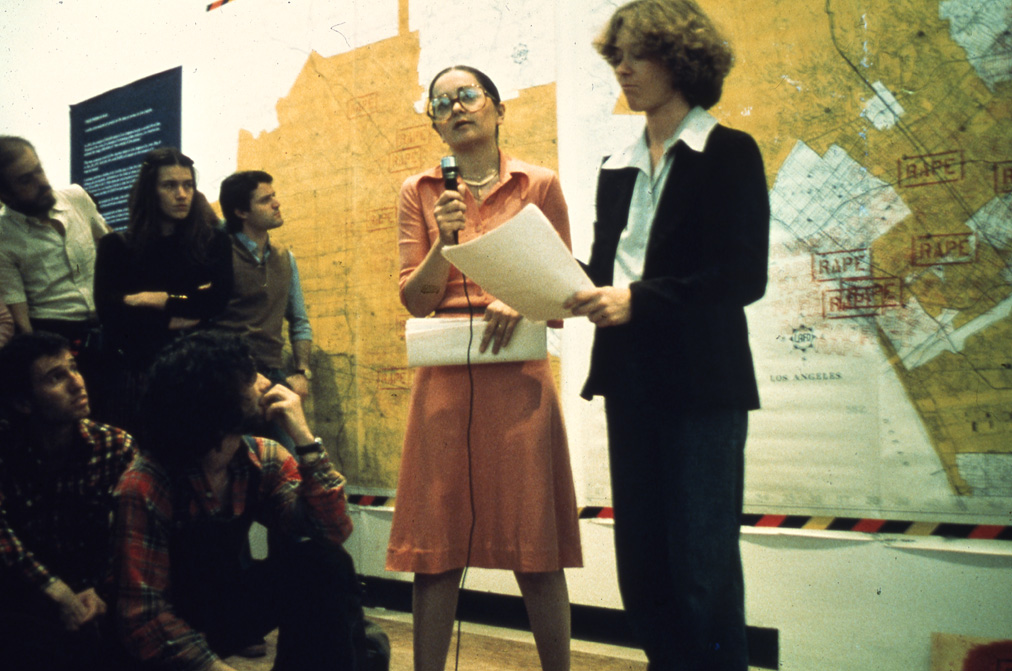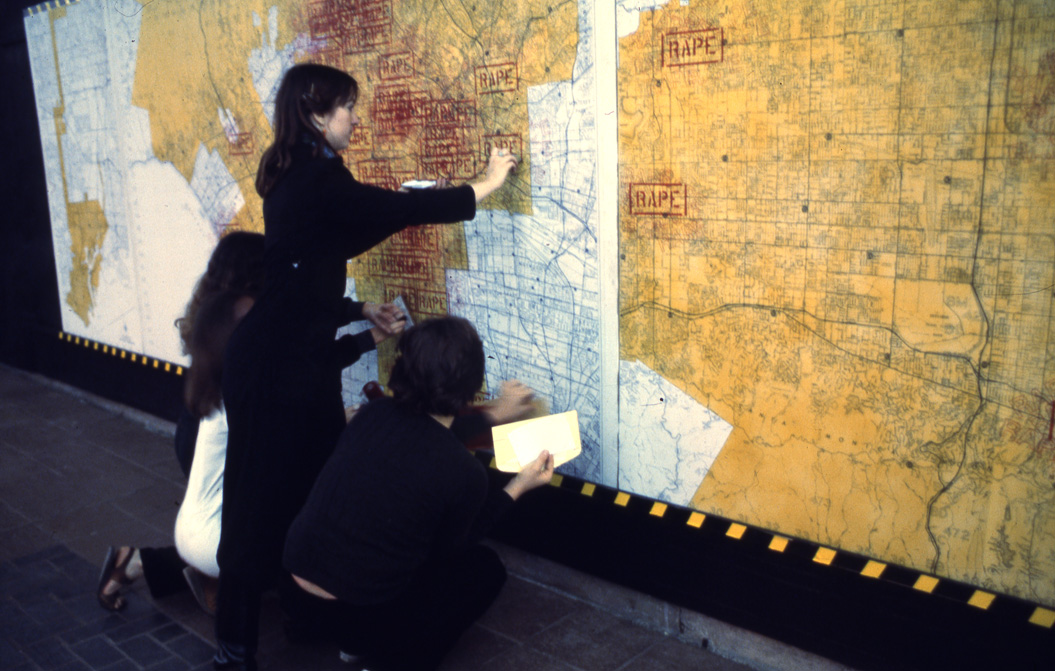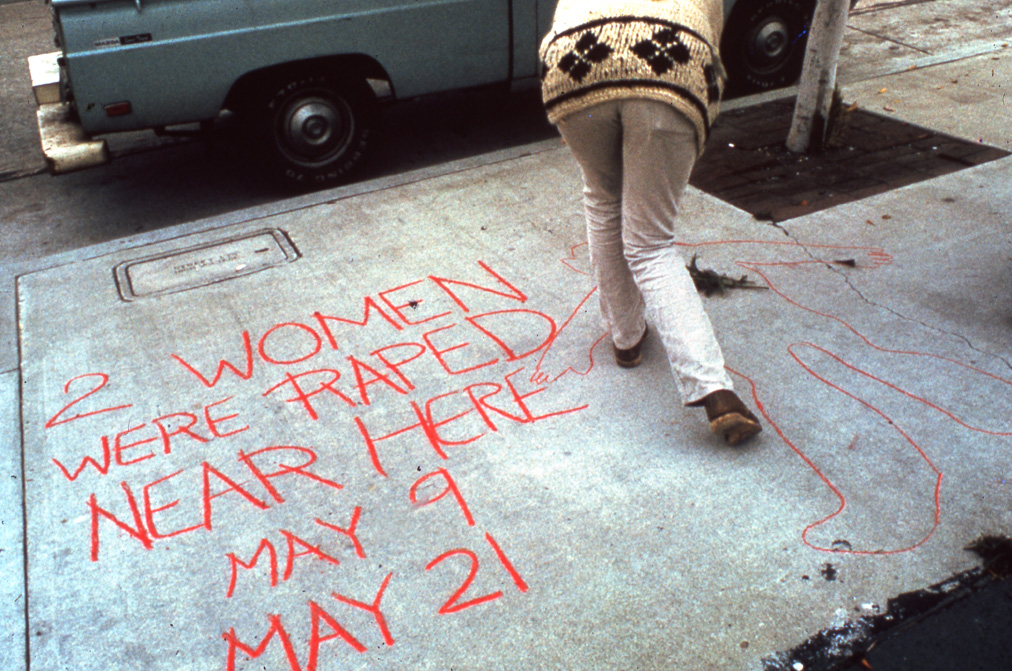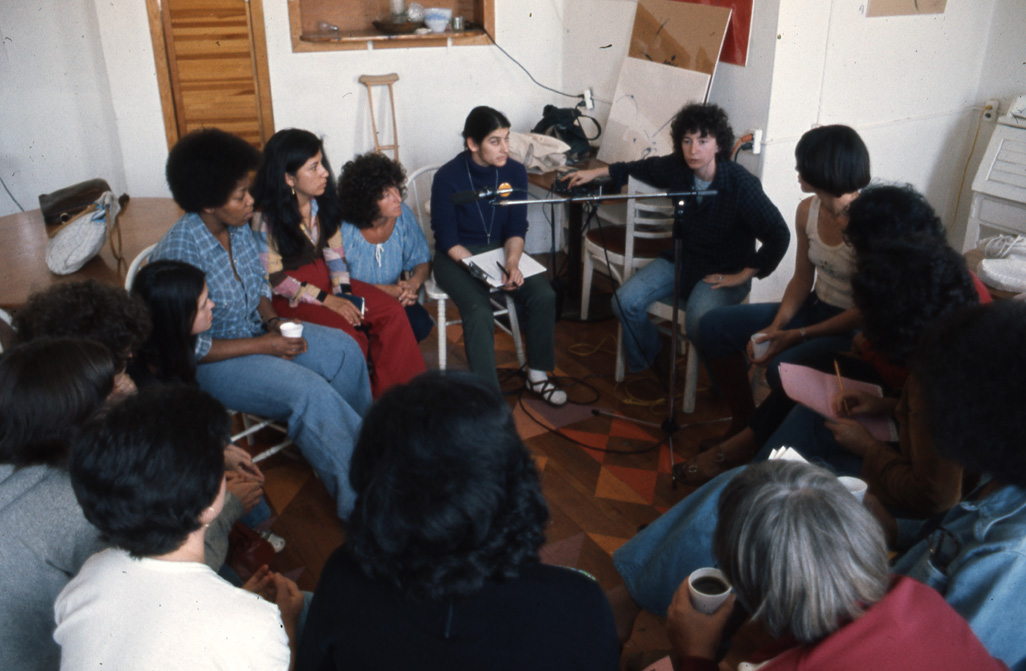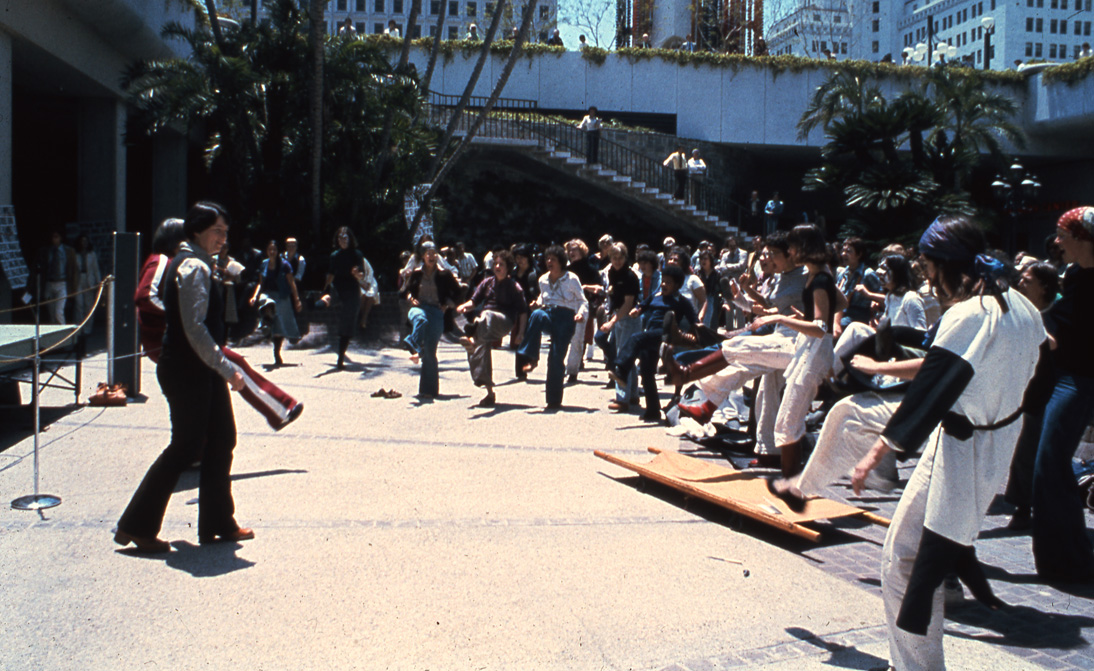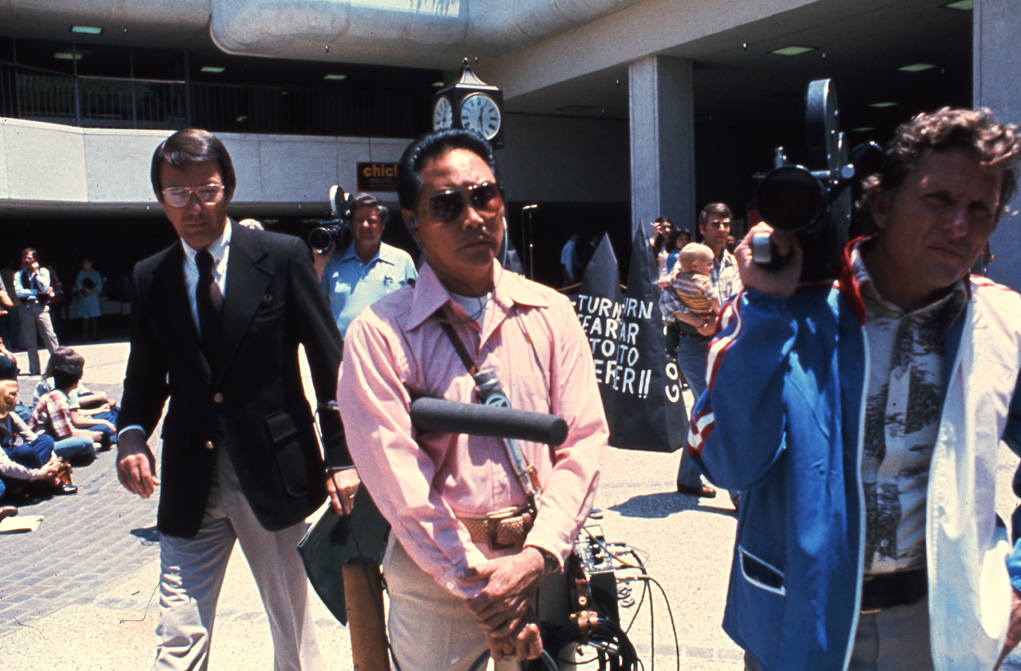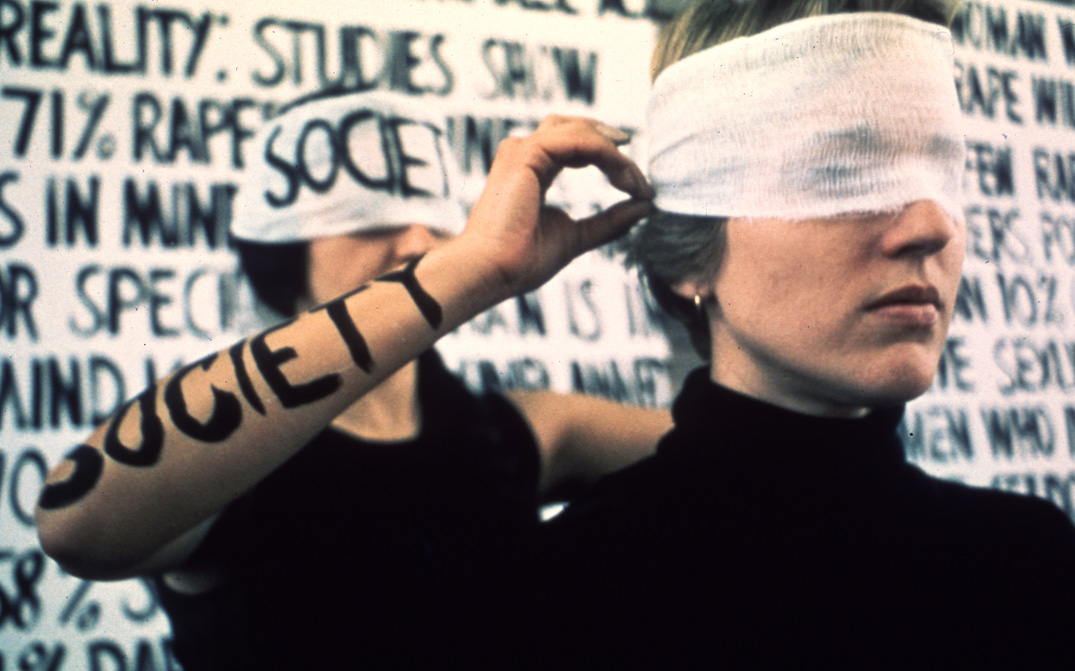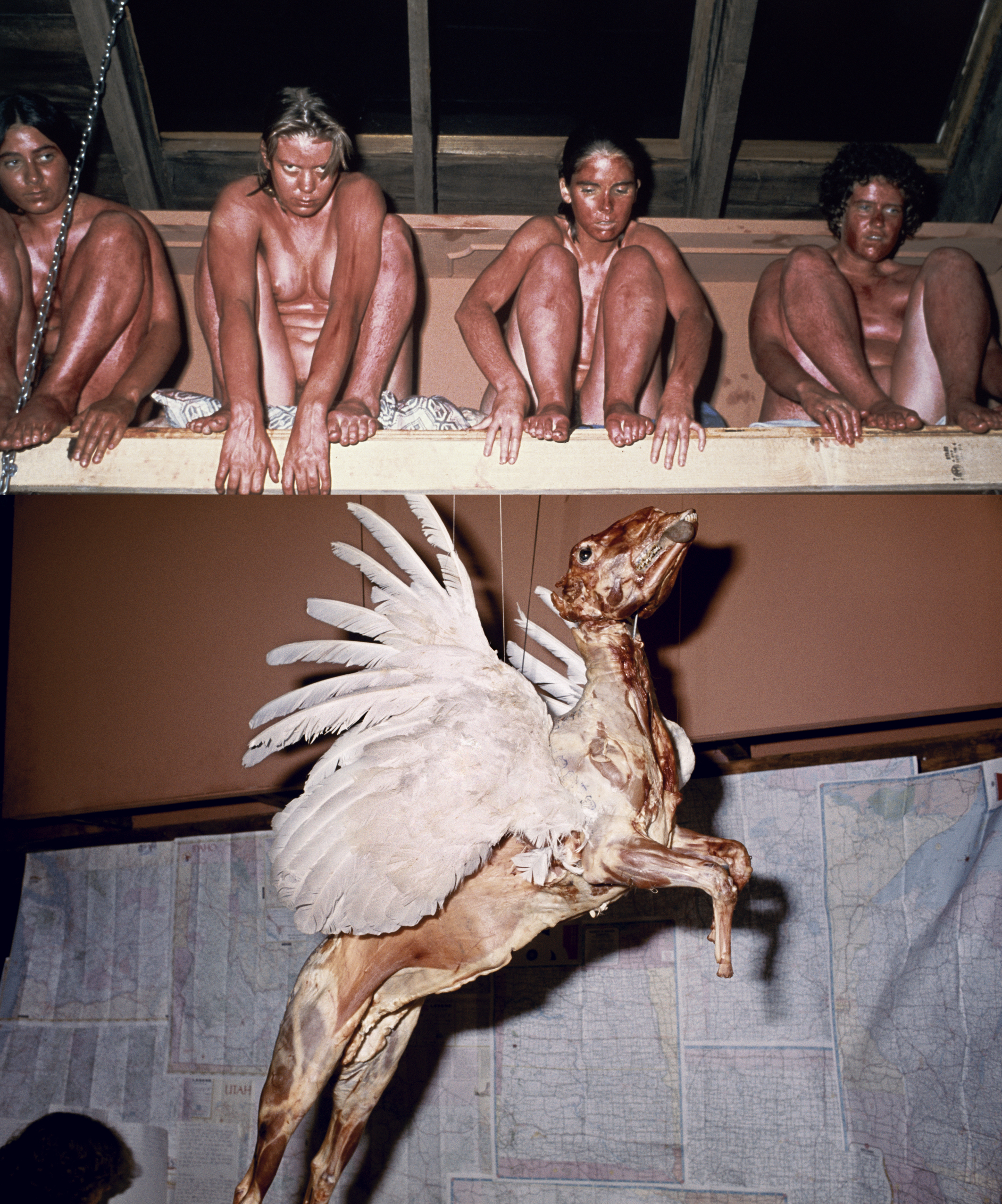Three Weeks in May (1977)
Three Weeks in May exposed the extent of re- ported rapes in Los Angeles during a three-week performance in May, 1977. This was the first of a series of large-scale performances by Lacy on violence against women and is considered a signature piece, defining strategies and processes for the series of works subsequently authored by Lacy (alone), Leslie Labowitz (alone), and the two artists working together as Ariadne: A Social Art Network.
Maps
An early idea for a performance—daily police reports stamped on a wall in a gallery, an aspect of process work familiar at the time—gave way to a need, politically, that was translated into an aesthetic form. Why talk about rape in an art gallery when one could be raped on the way home from that space?
The demand for relevance led to the placement of a large map of Los Angeles in the public shopping mall below City Hall. Each day Lacy went to the Los Angeles Police Department’s central office to obtain confidential rape reports from the previous day, and stamped their locations on the map. Each actual report was surrounded by fainter stamp markings symbolizing of the estimated nine additional rapes for every one reported. A second map, installed next to the first and showing sites of resistance—organizations and self-help activities for injured women—revealed a schedule of three weeks of activities on violence prevention.
Events
Over thirty events were produced during the piece, and television and print media covered many of them. These included rituals by Melissa Hoffman, Anne Gauldin and Laurel Klick exorcising their own violations; a guerrilla event marking sidewalks throughout the city with Phranc and Judith Loischild; a performance by Cheri Gaulke and Barbara Smith for a group of women activists and law enforcement officials who met over dinner, instigated by Lacy to increase coordination and provide a safe space for personal conversation; a self-defense demonstration in the City Mall; and a series of public performances by Leslie Labowitz.
Participating artists include Barbara Cohen, Melissa Hoffman, Leslie Labowitz, and Jill Soderholm.
Supported by the Los Angeles Department of Public Works and various local organizations and government officials, Los Angeles, California.
She Who Would Fly
As one event during Three Weeks in May, Lacy created an installation entitled She Who Would Fly as a personal expression designed for other artists. This performance marked a concern with public persuasion and established a precedent, in later works, of distinguishing different audiences for different imaginaries, a frequent subject in Lacy’s writings. During this performed installation she began by listening, over the course of two afternoons, as women who were invited to come to the gallery shared their own experiences of sexual violation. Afterwards, they wrote these stories on sheets of paper and attached them to maps of the United States that covered the room, taping them to the place where the rape had occurred. Next, Lacy created a ritual for her four performers, each of whom had direct experience with sexual violence, and together they shared food and stories and covered each other with red greasepaint. As a third installment, the work was open to the public for one evening. Four people at a time entered the small gallery space and were confronted with a lamb carcass with white-feathered wings suspended between the floor and ceiling as if in flight. As the audience worked their way around the lamb, they read the stories pinned to the map-covered walls. On one wall poet Deena Metzger’s description of her own rape was scrawled. After being in the space for a few minutes, the viewers, often with a shock, became aware that they were being watched. Four women were perched above the door, nude, their bodies’ stained bright red and staring intently down. Like avenging Valkyries, metaphors for a woman’s consciousness that of- ten splits from her body as it is being raped, the bird-women reminded visitors they were voyeurs to the pain of very real experiences.
Produced for James Woods’ Garage Gallery as part of Three Weeks in May, Los Angeles, California.

